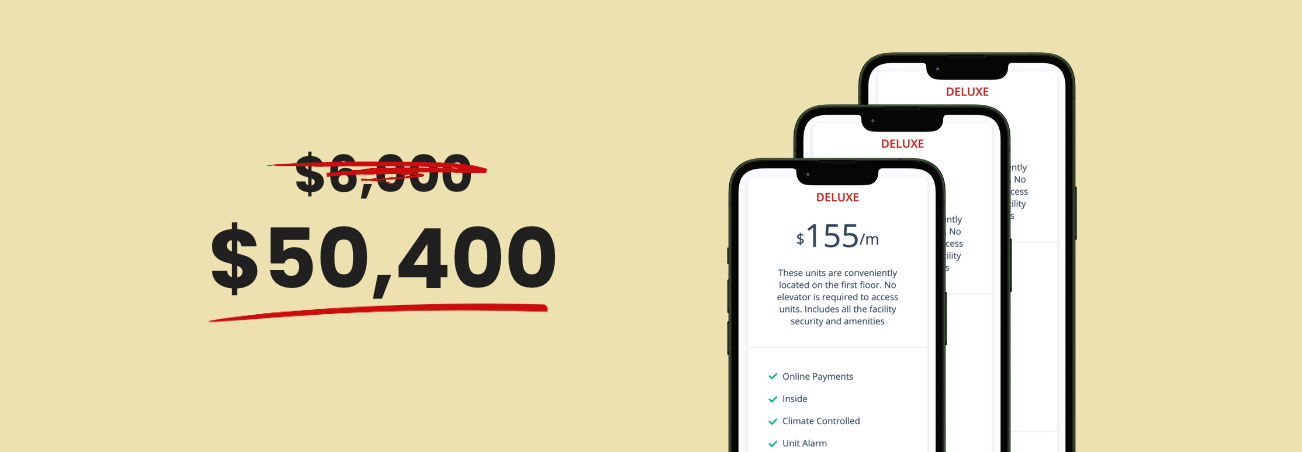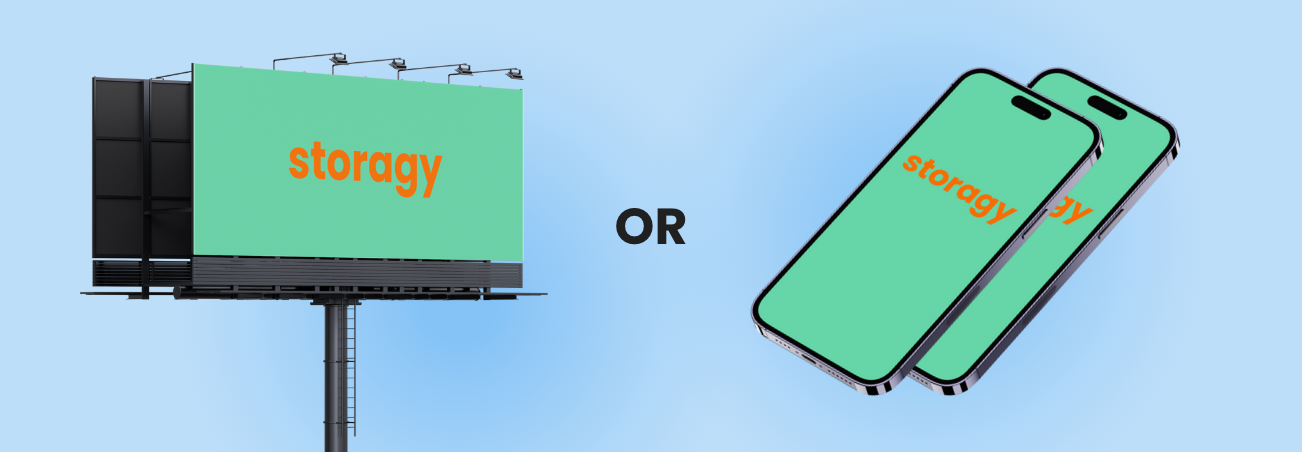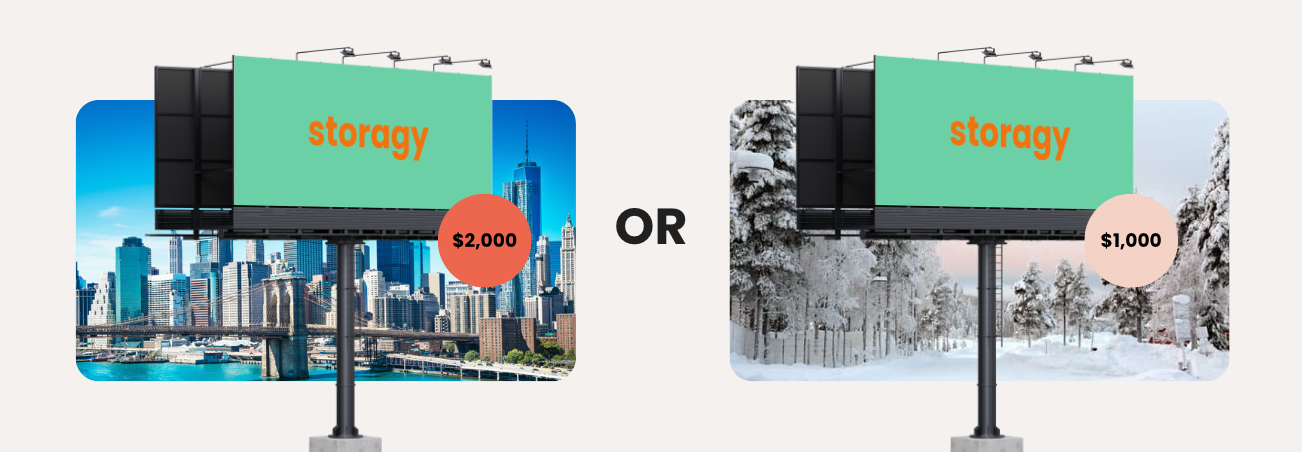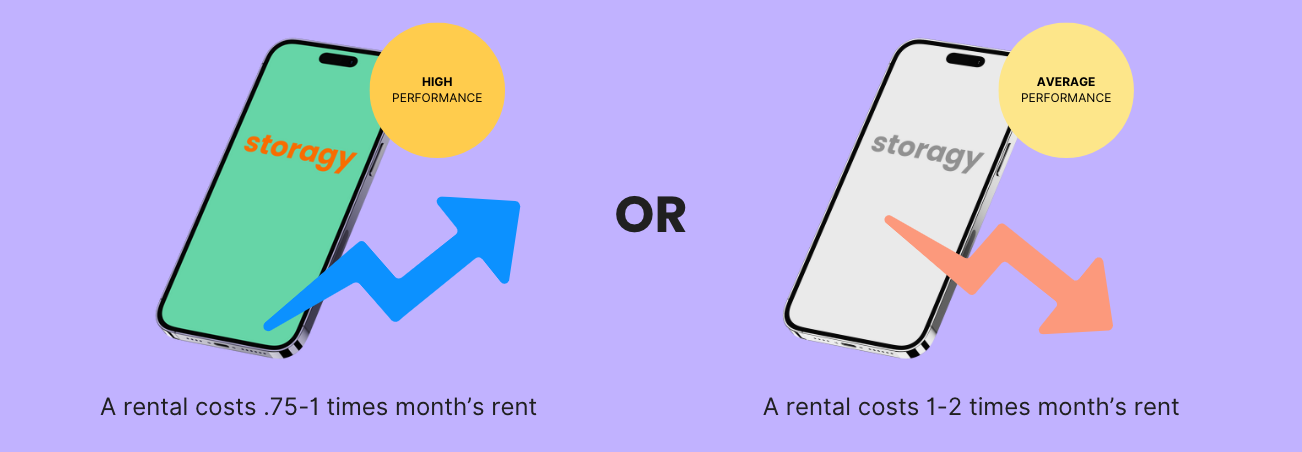Menu
May 31, 2023


“Pay $200 for this lead. Pay $1,000 for that ad platform. Throw on $500 for this marketing service, and maybe double that if you want it to work really well.”
Is it a good deal? Is it a horrible deal?
Without understanding the lifetime value of a storage customer, then how are you supposed to know? If you’re spending money, you should be doing it with intention and with an informed opinion.
To make it more complicated, the true cost of many marketing and lead acquisition channels will depend on how effective they are for you. So how do you know if they’re really worth it?
One thing is for sure: REITs have ramped up marketing budgets on a same-store basis by around 200% over the last five to ten years. If you haven’t done the same, then you’re falling behind.
In this post, let’s take a look at how you can determine the value of a single rental and the real cost of your marketing channels to help you make some intelligent marketing decisions.
The first thing you need to determine is the value of a storage unit rental at your facility.
Without knowing what a customer’s value is, how can you make any decisions about spending money to acquire more of them?
In self storage, we can’t look at a rental’s value as the first month’s rent. It’s not uncommon for operators to look at their monthly rentals from a given source and only think about that single month.
“I paid $500 for marketing for my storage facility and only got three rentals that paid me $100 each—I’m spending too much!”
Does that math work out for you? Hopefully, you can see the fault in the logic when you see it on the page. But if not, it’s alright! We’re going to dive into what’s wrong with that line of thought and explain how to really view the value of your customers.
It all comes down to the lifetime value of a customer.
What does it mean? Simply put, it’s how much a customer is going to pay over the course of their time doing business with you.
This is what a storage unit rental is actually worth.
There is a basic way to calculate this value as an average for all customers at your facility and for future rentals: the average length of stay across past customers times the average rate for a unit at your facility.
The steps look like this:
To keep it simple, let’s say the average rate at your facility is $100 and that the average length of stay is 14 months.
That leaves us with this simple math:
$100 x 14 months = $1,400 average lifetime value of a customer
The numbers at your facility will be more complex-looking, but the math is really that simple.
Working with averages, not all customers will stay for 14 months. But so long as you’re using accurate averages, this math is for the long-term calculation, not the month-to-month.
The true cost of marketing is based on how many rentals you’re actually getting through a given marketing channel.
You’re paying for marketing in order to get rentals, so you should really look at the cost of your marketing as the cost of a rental.
Let’s look at website costs as an example. Here’s our setup:
Let’s say your customers stay an average of 14 months and pay an average of $100 per month, giving them a lifetime value of $1,400. Your website brings in an average of three new rents each month.
On average, your website earns you around $4,200 worth of rentals per month.
Without the context of how much you’re paying, we don’t know if it’s worthwhile. So let’s throw in our website’s monthly cost: $500 a month.
Now that we know what our website costs, let’s calculate our Cost Per Rental:
$500 spent per month / 3 average rentals = ~$166.67 per rental.
Let’s round that up to an easy $167. Because we know a rental is worth $1,400, and we now know each rental costs us around $167, we can make a decision: Is it worth it for us to spend $167 to earn $1,400?
If you could pay $6,000 to make $50,400, would you do it?

Looking at each marketing channel in a bubble, this is the kind of equation you’re doing. Eventually, you want to compare the costs of different channels to discern if each one is really worth it relative to its competing channels.
Of course, in a website’s case, there are other values gained from having a website that make this part of your budget even more worthwhile: you need one for people to rent online at all, for example!
It’s great to know all of this information, but how do you put it into practical use?
How you use any one given piece of these various equations comes down to your self storage business’s needs.
Here are some common ways, but there are definitely more!
Remember our example about spending $500 for marketing each month and getting three $100/month rentals?
At face value, making $300 a month while spending $500 doesn’t seem like a worthwhile venture. You’re losing $200 a month, right?
Now we know better. If your lifetime customer value is $1,400, for example, then you’ve actually made $4,200 for that $500 of spending! That is much more worthwhile, and without determining these values, you have no way to even start making that determination.
Make sure to also consider other ways the marketing channel brings value, as well.
For example, billboards may just bring marketing. But for a website, you also should consider the online rental capabilities, basic customer service duties, online payments, and even sales work that the website performs.
Now that we know how to determine how much marketing is actually costing per rental—and how much each rental is actually worth—we can use these numbers to compare different types of marketing.

What marketing channels you use can come down to more than cost, but it’s a great starting place.
There are all kinds of marketing channels to look at, too:
At the most basic level, break down the cost per rental of each channel and compare them.
If you’ve been using these channels for some time and are evaluating whether or not to keep paying for them, there’s another metric to look at: You can revisit the lifetime value of customers from those channels specifically.
If you’re able to track which rental came from which source, you can see if there’s any difference in the customer’s length of stay. Maybe Google Ads customers don’t stay as long as billboard customers do on average, so this changes their lifetime value.
You can also factor in the frequency of rentals from each source. Maybe one source is more expensive or has lower lifetime customer values, but does it bring in many more rentals per month?
Maybe paying extra is worth it if you’re in desperate need of leasing up.
You can take this all a step further and talk about the value of the eyes put on your self storage facility.
For example, what % of people viewing a Google Ad click and visit your website? And at what % do those people that click become customers?
Why is this useful? This goes back to comparing marketing channels.
One company or service may pitch that you’ll get many more eyes on your advertisement with them, but just having people see your storage business doesn’t mean they’re going to rent. Getting a thousand views and one rental isn’t as valuable as ten views and two rentals.
A marketing company might present how much traffic they’re getting to your website through fun social media campaigns. Great, but how much of that traffic is renting?
Once you’ve used a given marketing channel for a year or two, you can start to use the wealth of data to make even more informed decisions about your spending.
If you look at the data and learn that you get many fewer rentals from Google Ads in one season, the chances are that the cost of each lead from the service is skyrocketing.

Using this data, you might determine that you can dial back your ad spend during certain seasons in order to reduce costs. Alternatively, you might determine that you’re hurting during those seasons and need to spend more to make more.
No matter which direction you take it, you can use the calculations you’ve learned to always ensure your spending is worthwhile and make intelligent decisions.
For some marketing channels—such as Google Ads—there’s a bit more complexity to how much a rental costs.
If you didn’t have a website that works well and allows online rentals, you wouldn’t have a place to send people. It takes both components for these kinds of marketing campaigns to function. Therefore, the cost of a rental directly from your website versus from Google Ads or other marketing channels can’t be compared exactly one-to-one.

Here are some baseline numbers to consider:
Let’s assume your average rent is $100, as in our examples above. You spend $1,000 on Google Ads. This means you might expect to see 8-10 rentals per month from a very successful Google Ads campaign or 4-6 rentals from an average performance.
If we assume your Google Ads campaign is around the average, then your cost per rental can be as high as $200 before we factor in the additional costs of the website you need to direct users to.
Speaking of your website, it’s also the case that you might compete against your own website’s ranking by running Google Ads. This is why you need to carefully consider the costs and benefits before launching an ad campaign for a self storage facility.
If your market isn’t highly competitive and other competitors aren’t running Google Ads, then you’re likely to hurt yourself by competing against your own website while running ads.
In this scenario, you’d be inflating your cost per rental for potentially no reason at all!
You can use the same equations for the cost per rental and lifetime value of a customer to determine the different values of different types of customers.
Maybe 5x5 tenants stay longer than 5x10 tenants. Maybe Google Ads customers have shorter customer lifespans than customers from mailers. Perhaps customers that rent during winter have significantly lower lifetime customer value and higher cost per rental than in summer.
All of these numbers can inform the choices you make about your self storage business.
Want to see more interesting self storage information and guides? Check out some of these posts:
At StoragePug, we build self storage websites that make it easy for new customers to find you and easy for them to rent from you.
